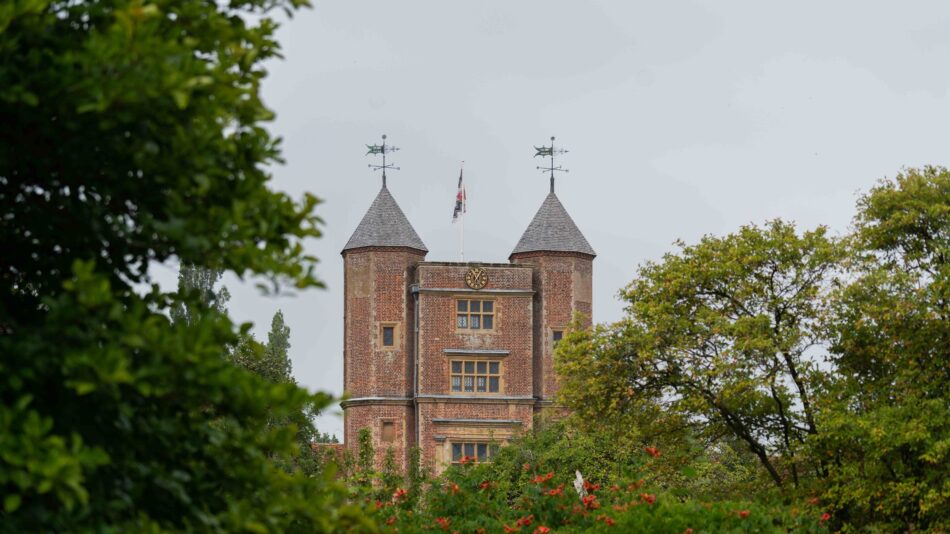

Kent has a great variety of cycling to offer. However, for Londoners, there are some pretty big climbs in the way — the North Downs — which can discourage your average leisure rider from attempting it. The solution: a short off-peak train journey from Charing Cross. The trains usually have two carriages containing dedicated space for bikes — these are identifiable by a blue flash on the top of the doors. However, bikes can also be stored inside the other doorways if those spaces are taken. There are restrictions on carrying bikes in peak times, but at off-peak times it’s not generally difficult to find space somewhere on the train.
The lanes which make up this 30-mile ride are in a small part of Kent called the Low Weald, part of which sits in the flood plain of a Medway tributary: the Beult. Weald means wooded, though the forests are long gone now, replaced by farmland and orchard. Luckily the maze of lanes which connect the old farms and small settlements make a good selection of rides possible. And providing one sticks to the area between the high line of the Greensand Ridge in the north and the hillier land to the south, it’s possible to avoid climbing almost completely.

CATTS PLACE
Leaving the train, it’s best to exit the station from the opposite platform. The route starts from Station Approach and turns left onto Church Road. Following this, you are soon out of the small town and on to country roads; a quick left turn, then right, brings you onto Pearsons Green Road.
You could just put your foot down and pick up a bit of speed on this fairly quiet stretch here and enjoy the ride. But you would miss a little bit of history if you did so. On the left, somewhat hidden by trees and overgrown shrubs, is Catts Place Oast House.
The route follows Pearsons Green Road on to Churn Lane and then left on to a slightly busier B-road for a mile, then on to more quiet, flat lanes: Sheephurst, Plains Road, Thorn and Pagehurst. At the corner of Pagehurst Road and Five Oak Lane is a building which is a complete contrast to Catts Oast.
CROSSWAYS HOUSE
Crossways was built in 2008 and claims to be one of Britain’s first totally carbon-neutral homes. It uses solar and biomass for its power and part of its insulation comes from the soil on the roof. In spring it can be really pretty as the unusual curved roof greens up and even blossoms with wild flowers. It was featured on the TV series Grand Designs.
The road stays almost completely level until after you’ve passed through Marden and crossed the A229. The route then turns right onto Cradducks Lane where there is a slight change of terrain. The road, while never becoming steep or hilly, begins to rise and fall just a little, and definitely wander and wind a little bit more and a few more trees begin to appear. Unfortunately, the quality of the road surface also begins to deteriorate too; it’s definitely rougher and there are more potholes so care is required. You are now on the quiet lanes towards Frittenden where few cars follow.
FRITTENDEN OAST
From Frittenden Road, turn left on to Park Wood Road and then Mill Lane, where the roads get narrower and emptier. It’s worth taking this rougher route to see the beautiful old farmhouses here complete with farm ponds, oasts and geese. We first rode down here over 30 years ago and it still looks exactly the same. There’s even a cottage on the right which is reminiscent of the illustrations from old books of fairytales. Through Frittenden village, the road turns right on to Sand Lane and then left on to the quirkily-named Dig Dog Lane.
SISSINGHURST CASTLE
From here towards the right, it’s possible to see the towers of Sissinghurst Castle and it’s also possible to take a track off Dig Dog Lane across the fields to visit the castle and gardens. Only recommended in good, dry weather though. This route soon takes in a short stretch of main road before turning right on to quiet lanes again which lead to Gribble Bridge Lane and Biddenden Vineyard.
It’s roughly ten miles from here to the end of the route, and apart from a quarter mile on the A262 that’s almost all on traffic-free lanes and almost all flat. Before reaching Headcorn, the route passes Headcorn Aerodrome before skirting the main Headcorn Road to take the last few lanes into the village. The station is at the western end of the village on the right off the route.

JOIN OUR MOVEMENT
Thanks to our 12,000+ members we've won major improvements across London, plus as a member you get access to a host of benefits including our quarterly magazine, featuring more routes like this.
KEEP UP TO DATE
